INDIAN ARMED FORCES CHIEFS ON
OUR RELENTLESS AND FOCUSED PUBLISHING EFFORTS

SP Guide Publications puts forth a well compiled articulation of issues, pursuits and accomplishments of the Indian Army, over the years

I am confident that SP Guide Publications would continue to inform, inspire and influence.

My compliments to SP Guide Publications for informative and credible reportage on contemporary aerospace issues over the past six decades.
The Missile Punch
 |
The Author is Former Director General of Information Systems and A Special Forces Veteran, Indian Army |
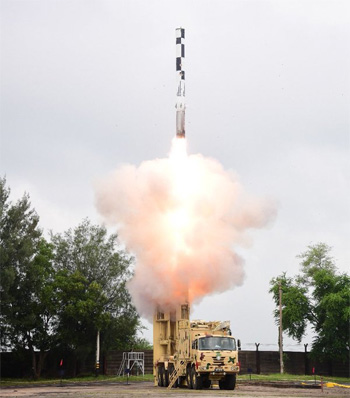
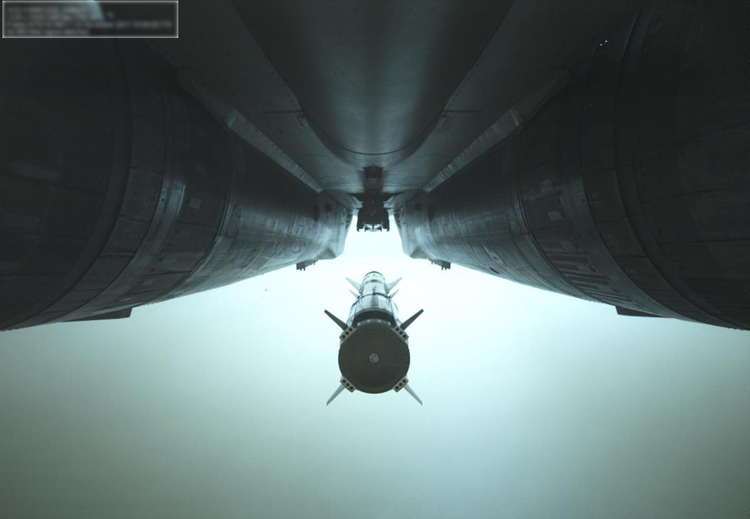
In a signal to China, India conducted a slew of missile tests recently. These included the 400-km extended range BrahMos supersonic cruise missile, the Shaurya hypersonic missile, a low skimming subsonic Nirbhay cruise missile, SMART long range torpedoes, and RUDRAM anti-radiation missile.
On September 30, India successfully test fired a new version of the surface-to-surface supersonic cruise missile BrahMos having a range of around 400 km from an integrated test range at Balasore in Odisha. The missile, featuring a number of indigenously developed sub-systems, was flight tested from a land based mobile launcher for a designated range. The range of the new land attack version of the missile has been extended to 400 km from the original 290 km while the speed has been maintained at Mach 2.8 which is nearly three times that of sound. The successful launch has paved the way for the serial production of the indigenous booster and other indigenous components of the powerful BrahMos weapons system. India has already deployed the 290-km range BrahMos along the border with China. BrahMos can be launched from submarines, ships, aircraft, or from land platforms. In May 2019, the Indian Air Force (IAF) successfully test fired the aerial version of the BrahMos missile from a Su-30 MKI fighter aircraft. IAF is integrating the BrahMos with over 40 Sukhoi fighter jets.
On October 3, India successfully test-fired indigenously developed hypersonic nuclear-capable Shaurya missile off the coast of Odisha. This is a land variant - an advanced version of Submarine Launched Ballistic Missile (SLBM) K-15 (B-05). The 10-metre-long nuclear-capable Shaurya missile has a strike range of around 800 km. Capable of carrying a payload of up to one tonne, it is less vulnerable to anti-ballistic missile defence systems due to its high maneuverability. Shaurya is a delivery system stored in a composite canister for rapid deployment and minimum interaction with the elements for a long period. Shaurya missile flies at a supersonic speed of Mach 7, or 2.4 km per second, at a height of 50 km (within atmosphere) and hits the designated target at Mach 4. The test of Shaurya on October 3 was the final one before induction as part of user trials. Government has cleared the induction of Shaurya missile which has a warhead of round 160 kg and it will be soon deployed at locations identified by the Strategic Forces Command.
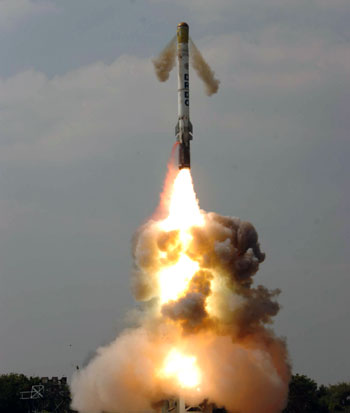
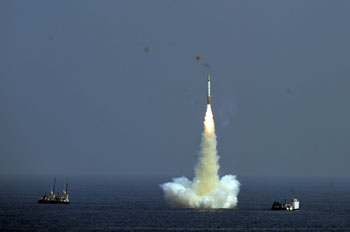
On October 5, the indigenously developed Supersonic Missile Assisted Release of Torpedo (SMART) was successfully tested from a test range on A.P.J. Abdul Kalam Island off the Odisha coast. SMART is a missile assisted release of lightweight anti-submarine torpedo systems for anti-submarine warfare (ASW) operations far beyond torpedo range. When fired from a ship or coastal battery, SMART takes off like a low-lying supersonic missile with two-way data link from the warship or an airborne submarine target detection system and provides the exact location of the hostile submarine to correct its flight path midway. Approaching the submerged enemy submarine, the missile ejects the torpedo system into the water and the autonomous torpedo moves to hit the submarine. All the mission objectives (of SMART) including missile flight up to the range and altitude, separation of the nose cone, release of torpedo and deployment of velocity reduction mechanism (VRM) were fully met during the test. The test encompassed hybrid technology which helped upgrade the present system and also increase the strike range.
On October 9, India successfully flight tested indigenously developed anti-radiation missile RUDRAM from IAF’s Su-30MKI combat jet to attack a radiation target located on the A.P.J. Abdul Kalam Island of the Odisha coast. The RUDRAM hit the radiation target with pin-point accuracy. The missile is integrated on Su-30MKI fighter aircraft as the launch platform, having capability of varying ranges based on launch conditions. It has INS-GPS navigation with Passive Homing Head for the final attack. The Passive Homing Head can detect, classify and engage targets over a wide band of frequencies as programmed. The missile is a potent weapon for IAF for suppression of enemy air defence effectively from long stand-off ranges.
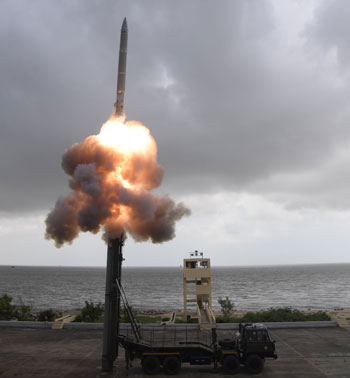
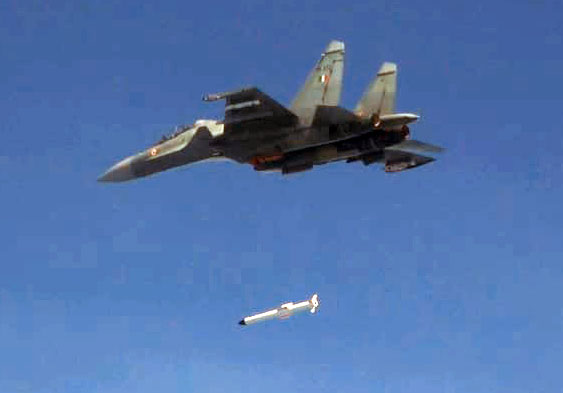
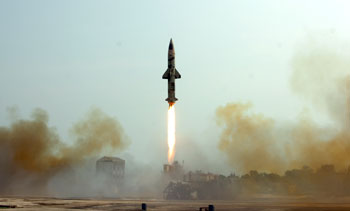
On October 16, India successfully conducted night trial of the indigenously developed nuclear-capable Prithvi-2 missile as part of user trials by the Army from a test range in Odisha. The previous trial of Prithvi-2, carried out after sunset on September 23 from the same test range was also successful. Trial of the missile, which has a strike range of 350 km, was carried out from a mobile launcher. The missile was randomly chosen from the production stock and the entire launch activity was carried out by the Strategic Force Command (SFC) and monitored by scientists of the DRDO as part of a training exercise, defence sources said. The downrange teams onboard a ship deployed near the designated impact point in the Bay of Bengal monitored the terminal events and splashdown. Prithvi-2 missile is capable of carrying 500-1,000 kg warheads. In 2004, the nine-metre tall 'Prithvi' was the first missile inducted into Indian Armed Forces, developed by DRDO under the Integrated Guided Missile Development Program (IGMDP), foundation of IGMDP having been laid by Dr A.P.J. Abdul Kalam, later President of India.
DRDO is also developing the 5,000 km version of the submarine-launched ballistic missile (SLBM). With a range equivalent to Agni-5 land-based ballistic missile, the K-5 will be deployed on Arihant class of nuclear submarines. The K-5 weapon system is expected to be tested in the next 15 months and then deployed on the 6,000-tonne Arihant-class of SSBNs. The second Arihant-class nuclear-powered submarine, INS Arihant, is also likely to be operationalised within the next six months. India has tested the K-4 SLBM with a range of around 3,500 km multiple times including twice in January 2020 and it is ready to enter service. Flight test of the indigenous 1,000-kilometer-range ‘Nirbhay’ cruise missile on October 12 was aborted due to technical snag but more testing is scheduled in coming weeks. Nirbhay is Indian version of the US Tomahawk and the Russian Club SS-N-27 cruise missiles. Weighing 1,500 kilograms with a height of 6 meters and a speed of Mach 0.7, the missile can carry up to 300 kilograms of conventional and nuclear warheads.
Above is god going but the crux lies in early operationalisation of these systems, induction in sufficient numbers, plus streamlining their employment and command and control – nuclear and non-nuclear. Our concurrent focus areas should be directed energy weapons (DEWS) both electromagnetic and kinetic) as well as swarm drones.





